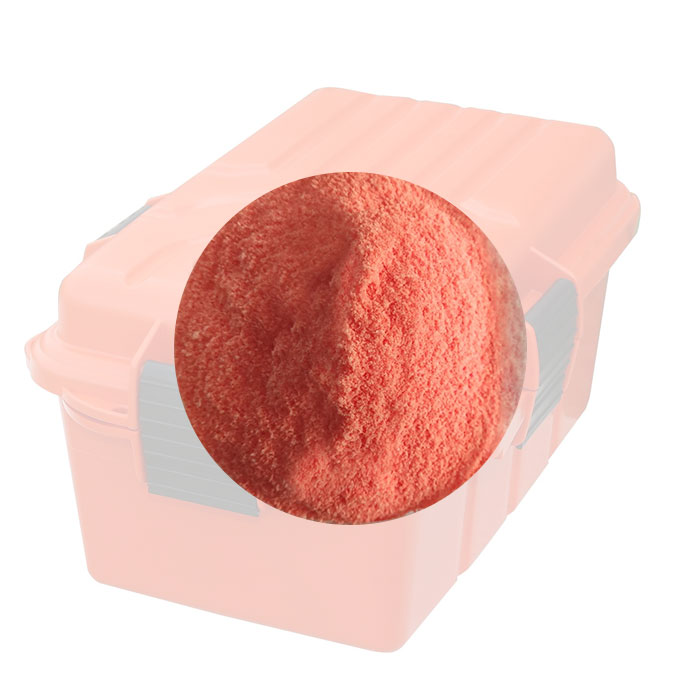Detailed description of HDPE Rotomoulding Material
2024-06-28
HDPE (High-Density Polyethylene) rotomoulding material is a widely used plastic resin in the rotational molding process, which is a method for creating hollow, seamless, and durable plastic products. HDPE is valued for its excellent mechanical properties, chemical resistance, and versatility. Here’s a detailed description:
Components and Properties:
1. Material Composition:
- Polyethylene: HDPE is a type of polyethylene characterized by its high density and linear structure, resulting in greater tensile strength and durability compared to other forms of polyethylene.
- Additives: May include stabilizers, colorants, UV inhibitors, and other modifiers to enhance specific properties such as color stability, UV resistance, and impact strength.
2. Chemical Properties:
- Chemical Resistance: Resistant to many chemicals, including acids, bases, and organic solvents, making it suitable for various industrial applications.
- Weather Resistance: Enhanced with UV stabilizers to prevent degradation from prolonged exposure to sunlight.
3. Thermal Properties:
- Thermal Conductivity: Low thermal conductivity, providing good insulation properties.
- Thermal Expansion: Exhibits thermal expansion, which is considered in design and application to accommodate changes in temperature.
Rotomoulding Process:
1. Powder Preparation:
- HDPE is typically supplied in powder form, with particles sized and treated for optimal flow and distribution within the mold.
2. Molding:
- Mold Charging: The HDPE powder is placed into a hollow mold.
- Heating and Rotation: The mold is heated while simultaneously being rotated around two perpendicular axes. The powder melts and coats the interior of the mold evenly.
- Cooling: After the material has coated the mold uniformly, the mold is cooled, solidifying the HDPE into the desired shape.
- Demolding: The finished part is removed from the mold once it has sufficiently cooled and hardened.
Applications:
1. Industrial Products:
- Tanks and Containers: Used for chemical storage, water tanks, and fuel tanks due to its chemical and impact resistance.
- Pipes and Fittings: Suitable for sewage, water supply, and gas distribution.
2. Consumer Goods:
- Outdoor Furniture: Resistant to weather and UV light, making it ideal for outdoor applications.
- Playground Equipment: Safe and durable for children’s play structures.
3. Agricultural Products:
- Feed and Water Troughs: Durable and resistant to harsh agricultural chemicals and conditions.
- Compost Bins: Used for home and commercial composting.
4. Marine Applications:
- Buoys and Floats: High buoyancy and resistance to saltwater and UV light.
Advantages:
1. Durability: High impact resistance and tensile strength ensure long-lasting products.
2. Versatility: Suitable for a wide range of applications due to its adaptability in the rotomoulding process.
3. Chemical Resistance: Suitable for storage and transportation of a variety of chemicals.
4. Weather Resistance: Enhanced with UV stabilizers, making it ideal for outdoor use.
5. Ease of Manufacturing: Rotomoulding allows for the creation of complex shapes and large hollow parts without seams or joints.
Considerations:
1. Cost: While HDPE is cost-effective, the initial setup for rotomoulding can be expensive.
2. Cycle Time: Rotomoulding has longer cycle times compared to other molding processes, such as injection molding.
3. Material Handling: Requires careful handling of the HDPE powder to prevent contamination and ensure consistent quality.
4. Design Limitations: Although rotomoulding is versatile, certain design limitations exist, particularly with very fine details or extremely thin walls.
Maintenance and Handling:
1. Storage: HDPE powder should be stored in a dry, clean environment to prevent contamination and moisture absorption.
2. Equipment Maintenance: Regular maintenance of rotomoulding equipment, including molds and heating systems, to ensure consistent product quality.
3. Quality Control: Regular inspection of finished products for defects, such as voids or uneven wall thickness, to ensure they meet required specifications.
HDPE rotomoulding material is a versatile and durable choice for creating a wide range of products. Its combination of physical strength, chemical resistance, and adaptability to the rotomoulding process makes it ideal for numerous industrial, commercial, and consumer applications.



